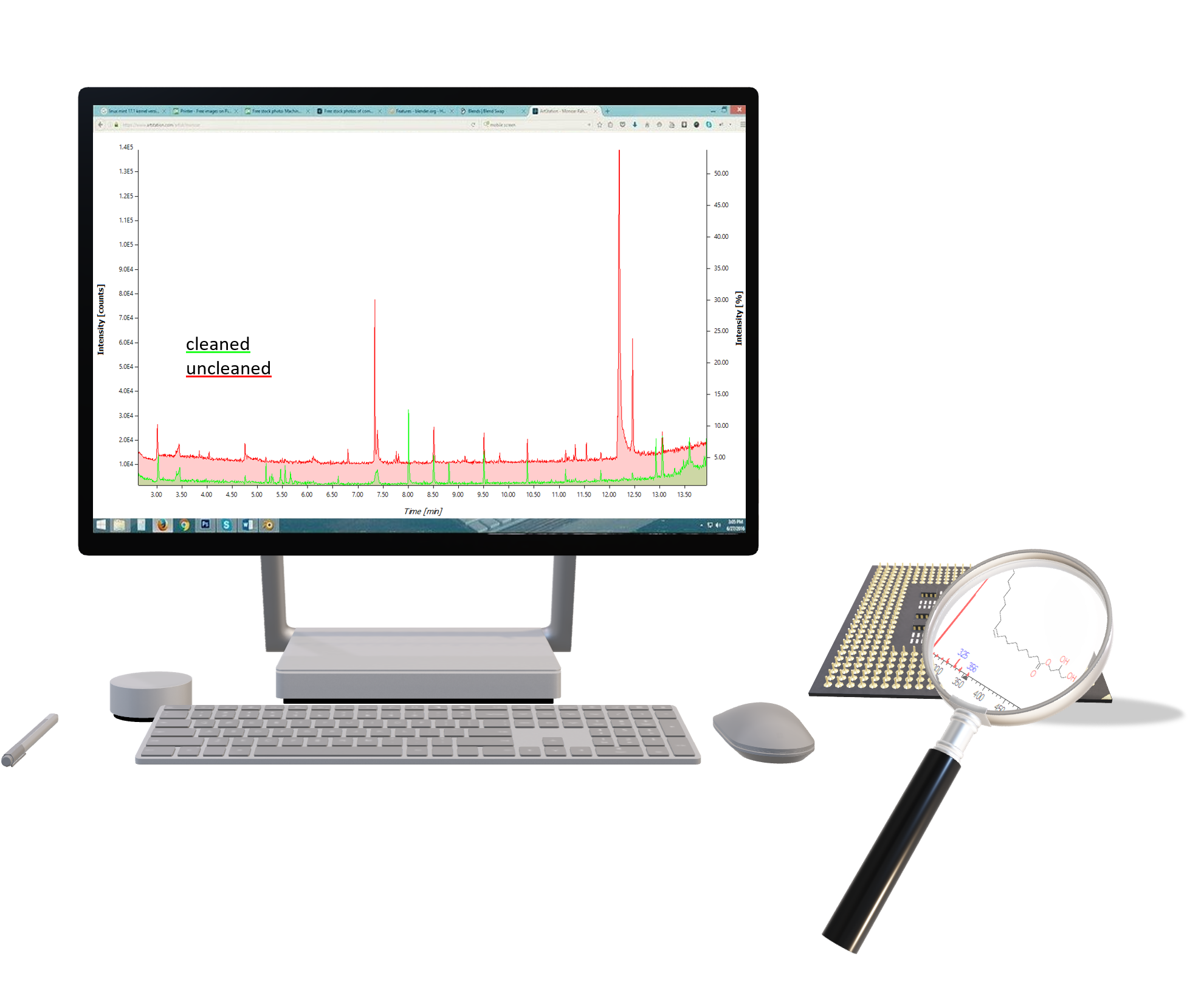Gas chromatography with mass spectrometry coupling (GC-MS)
Determination of filmic impurities - greases, oils, process auxiliaries
In everyday life in the laboratory, this is repeatedly shown by requests where the manufacturer has to prove that no organic residues are present on a certain component without knowing how to provide this proof. The lack of a normative basis as well as the resulting lack of routine in dealing with such contamination makes a targeted analysis for film chemical residues much more difficult than a comparable particle analysis.
On closer inspection, however, even such problems can be overcome. Even if a simple distinction à la VDA 19.1 into glossy particles, non-glossy particles and fibers for filmic residues is not possible, the scope of possible contaminations is surprisingly limited. In principle, the following applies:
- Substances that are applied to a component during processing can be found on the component
- Substances with which the component has no contact should also not be found on the component
As trivial as this may sound, it often leads to the fact that often only one or two process oils or similar are really considered as residues. A powerful method for detecting such residues is gas chromatography with mass spectrometry coupling (GC-MS). Here, the organic residues are first extracted from the component using a suitable solvent and then separated and characterized by chromatography. Although GC-MS as a trace analysis would be quite capable of identifying all components of a residue and detecting them individually, this is often unnecessary or even counterproductive. It is much more important to recognize a process aid as a whole and to find it again.
Profile
| Typical industries | automotive industry, mechanical engineering, electronics industry |
|---|---|
| Type of contamination | organic contamination (oils, greases) |
| Result | qualitative material classification, quantification possible |
Further information
This test does not fall within the scope of our accreditation, detailed information on the scope of accreditation is available here.
You can also find an overview of tests for chemical-film contamination in our current brochure.
If you have any questions, the employees from our sales team will be happy to help you.
Newsletter registration

